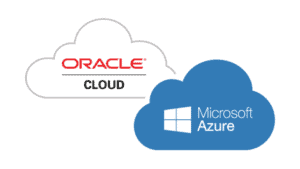The Percona 2023 State of Open Source Database Survey’s main result is that organizations are playing it safe at the moment when it comes to initiatives around their databases. Nor will this change very soon.
There is very little of interest happening in the field of databases in the marketplace. That is, organizations are not eager to change their strategy in terms of database deployment. This is Percona’s conclusion based on a survey it conducted among 300 database professionals. Reasons for this attitude are the aftermath of the corona pandemic and the relatively uncertain economic times we live in, according to Percona.
Other notable things from the survey
In addition to this general observation, a few other things stand out. For example, developers’ wishes do not seem to play a huge role in decisions around databases. 55 percent of those surveyed indicated that developer agility plays a role here. At the end of the day, it’s more about things like reliability, performance, security, privacy and scalability.
Such a finding is likely a balance of different ways you can look at the combination of developers and databases, indicates Peter Zaitsev. We speak to the founder and, until last October, CEO of Percona at Percona Live. It has to do with where an organization’s focus is. If you are primarily concerned with self-service, then everything is basically already in place. Then an organization will not have the impact on developers at the top of the list. That will be taken care of if all goes well. If developers don’t have it, then it is undoubtedly higher on the agenda. So it is not that developers are not considered important, according to his interpretation.
Another finding from the survey seems to support Zaitsev’s interpretation. According to respondents, providing options to developers is the second most important driver for going for open source databases. Only cost reduction is more important, but the difference is not great (83 vs. 81 percent). Note that among respondents who choose closed databases, the importance of developers does not appear. It is not even in the top 10. There, the main concerns are stability, security and compliance.
Relational and non-relational
Finally, the study also confirms what we could more or less already estimate. Organizations use both relational and non-relational databases. Relational databases still dominate, however. 99 percent of respondents use at least one relational database, 86 percent use at least one non-relational one. MySQL is the most popular among respondents, with PostgreSQL in second place. Oracle SQL ranks third. Of the non-relational databases, MongoDB is the most popular, followed by Couchbase and Redis.
MongoDB, meanwhile, is on a steep decline in the market after its licensing change in 2018, we hear from Dave Stokes, Technology Evangelist at Percona. That was when it switched to a Service-Side Public License (SSPL). In doing so, it stepped away from the “real” open source, is the belief of those who group themselves under that rubric. This is not without consequences. It also (partly) caused Zaitsev to co-found FerretDB. That is supposed to be an open-source alternative to MongoDB. It promises to take MongoDB’s document database toward PostgreSQL.



















